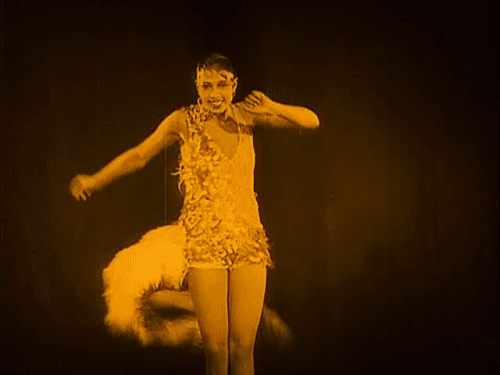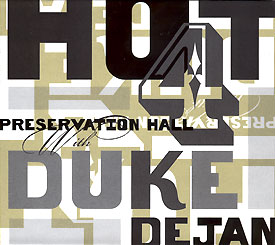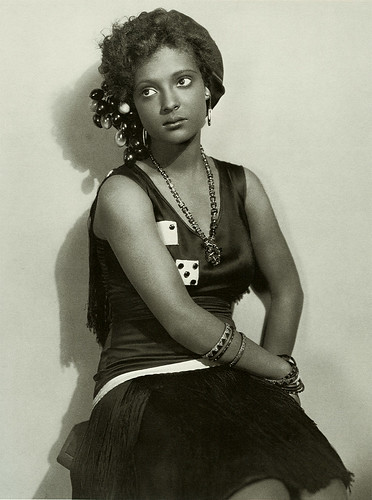We’ve been teaching with this song a bit lately, and it is the WORST EAR WORM EVER. This is a fun clip, though.
Category Archives: lindy hop and other dances
Katherine Dunham and friends
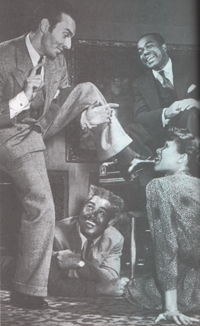
George Balanchine, Katherine Dunham and two other blokes on the set for Cabin in the Sky
Josephine Baker
Metronome All Stars, 1946
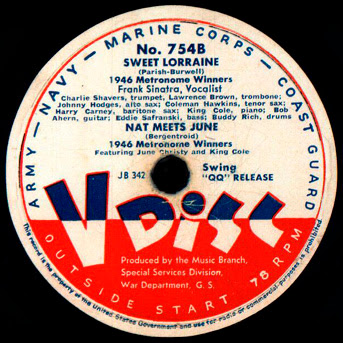
My favourite part of the new Coleman Hawkins Mosaic set is the little collection of 1946 recordings by the Metronome All Star Band. This particular session features Charlie Shavers, Lawrence Brown, Johnny Hodges, Coleman Hawkins, Harry Carney, Nat ‘King’ Cole, Bob Ahern, Eddie Safranksi, Buddy Rich, Frank Sinatra, June Christy and Sy Oliver (arranging), recording in New York on the 15th December 1946. All proceeds from the artists’ royalties were donated to charity. My two favourite songs are ‘Sweet Lorraine’ and ‘Nat Meets June’.
Esquire All Stars (featuring Frank Sinatra) – Sweet Lorraine:
Esquire All Stars (featuring Nat King Cole and June Christy) – Nat Meets June:
These Metronome all-star bands (there were a few, and they’re listed on wikipedia), were compromised of big name stars. These musicians were chosen by polling the Metronome magazine’s readership, who were asked to compile their ‘dream team’ bands. So we’re listening to a group of big name individual megastars, who’ve come together to specifically to record just these songs. You can read a bit more about them on allmusic.com.
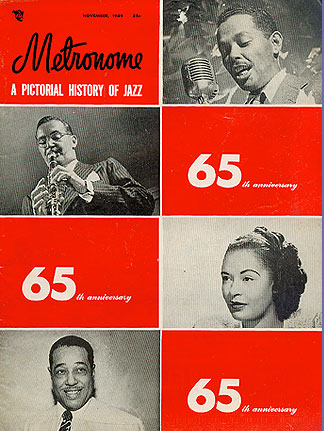
(cover of the 65th anniversary issue of Metronome magazine, November 1948)
Other magazines did this sort of stuff as well, including Esquire. It’s something I’ve written about quite a few times, and you can check out these posts if you’re curious.
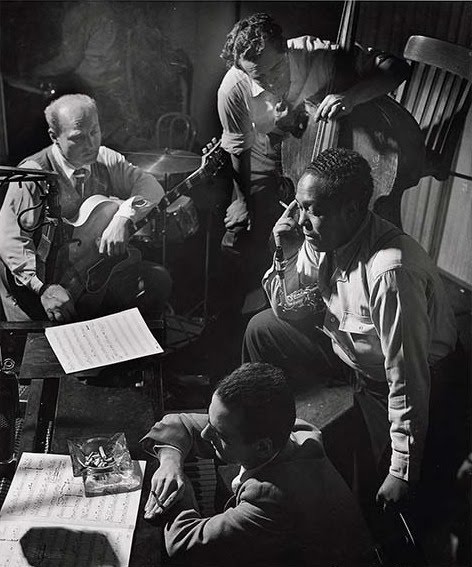
(Herman Leonard’s 1949 photo of the Esquire All Stars featuring Charlie Parker and from the Morrison Hotel Gallery)
For more photos of this sort of jam session, you must search for ‘Gjon Mili’ in the Life Magazine collection hosted by Google.
These little Coleman Hawkins Metronome All Stars recordings are really lovely. I’m quite fond of a bit of velvety vocal and really laid back swing. Nat King Cole and June Christy are both featured on Mosaic sets (here and here respectively), but those sets aren’t in press any more. I prefer the Christy one (which also showcases Peggy Lee), but both sets are lovely and chillaxed.

[Portrait of Frank Sinatra and Axel Stordahl, Liederkrantz Hall, New York, N.Y., ca. 1947] (LOC), originally uploaded by The Library of Congress
Frank Sinatra, of course, needs no introduction, but I’m not a huge fan of his later work, particularly the crooner stuff. In fact, I really dislike it …, no I HATE it, and LOATHE dancing to it (for the most part). He did some really danceable stuff with Tommy Dorsey (including a really good version of ‘Blue Skies’), and some more palatable stuff later on, but it’s a bit harder to find. That’s one of the things I love about these 1946 Metronome recordings – he demonstrates just how orsm a vocalist and musician he was, and he shares the spotlight with other mega stars, so the vocals become just one part of the story, rather than the whole show.
I found these particular Metronome All Stars recordings on the Coleman Hawkins Mosaic set, but they’re not representative of all the material in that set (unsurprisingly – it’s an anthology of work from a twenty five year period). You can probably pick up these two songs pretty easily from other sources.
Hellzapoppin WIN
This is my favourite part of the Hellzapoppin’ clip – where Frankie pecks along behind the couple pulling mad aerials.
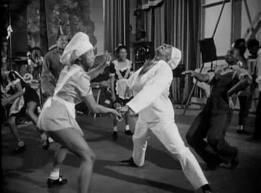
Preservation Hall Hot 4 with Duke DeJan
This is my favourite Preservation Hall Jazz Band album. It’s called Preservation Hall Hot 4
“with Duke DeJan” and I like it because it’s a smaller group, and while they’re definitely trucking along, it’s a calmer, quieter album. Their version of ‘Dinah’ is my most favourite, probably because I used to run to it every morning, back in the olden days, when my knees could hack both lindy hop and running. Ah running, I miss you so :(:::
I should write a post about Pres Hall at some stage, but for now, the basics are: this is a band that’s been around for squillions of years, and is really the ‘house band’ for the Preservation Hall in New Orleans. The personnel have changed over the years, but the core ethos – play good music – has not. They have a jillion albums, and if you like jazz, you really should buy them all. I especially like the album with Del McCoury’s band, but you mightn’t – there’s a lot of stringy old timey action there. I also like the Preservation: An album benefitting Preservation Hall and the Preservation Hall Music Outreach Program album, but the Hurricane Sessions one is good too.
Dancers tend to favour their version of ‘Shake That Thing’ (from the album Shake that thing), ‘Last Chance to Dance’ and ‘Sugar Blues’ (from the Hurricane Sessions album). But I prefer this quieter, gentler album. It’s really quite a different type of jazz – less of that raucous collective improvisation. More of that quieter, listening-to-each-other stuff.
Learn the Big Apple
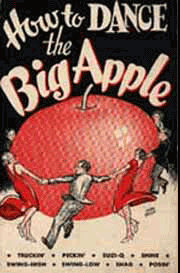
I wish I knew where this poster came from. I SHOULD look it up.
Nina Mae McKinney
I ran across this photo of Nina Mae McKinney (who I wrote about during last year’s Women’s History Month posts here) on pintrest (via p8ronella), and was delighted to see the costume from this (fabulous) film sequence:
That film clip is supercool for many reasons, though one of them is for the tall-woman/short-man partner sequence (I think the woman leads, though I’m not sure).

